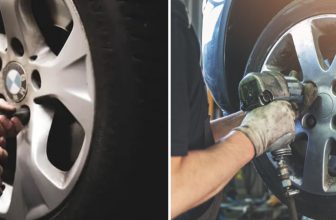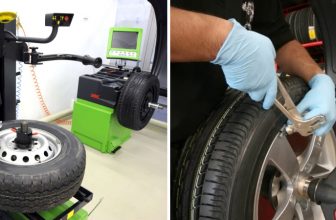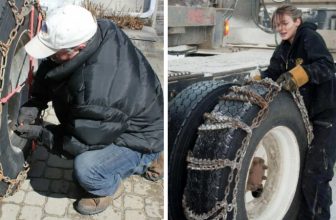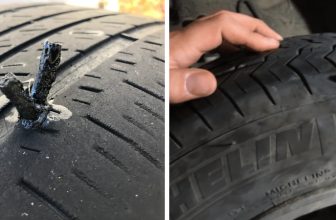How to Fix Slow Tire Leak
A slow tire leak is one of the most annoying and dangerous car maintenance issues to deal with. The problem can cause a steady loss of air pressure in your tires, leading to punctures, blowouts, and even tire failure on the highway. Fixing a slow tire leak quickly is vital for safety.

One of the major advantages of learning to fix slow tire leaks is that it can save you from having to purchase a new tire or pay for costly repairs. It also allows you to learn more about your car and be able to troubleshoot other minor issues yourself in the future. In most cases, a slow tire leak can be repaired by patching the faulty area or using a tire sealant. This process is often simple and can be done at home with little to no cost. You can find step-by-step instructions on how to fix slow tire leak in this blog article.
Tools You Will Need
- Air compressor
- Tire pressure gauge
- Jack
- Jack stand
- Lug wrench
- Air chuck
- Valve stem core tool
- Wheel chocks
- WD40 or other penetrating oil sprayer
- Rag/newspaper to protect the wheel from dirt, grime, and debris.
Step by Step Processes for How to Fix Slow Tire Leak
Step 1: Inspect the Tire
Before doing anything else, you should take a moment to inspect the tire. Look for any signs of wear and tear that might be causing the slow leak. If your inspection reveals no obvious damage, then you need to locate where the leak is coming from. This can be done by inflating the tire and submerging it in water. If a bubble appears, this will indicate where the leak is.

Step 2: Patching the Tire
Once you have located the source of the slow tire leak, it’s time to patch it up. You can do this by using a tire repair kit and following the instructions provided. It’s important to make sure that you seal the patch properly. If it isn’t sealed fully, you won’t be able to fix the slow tire leak and your tire will remain deflated.
Step 3: Re-Inflating the Tire
Once you have patched the tire, it’s time to re-inflate it. You can do this with an air compressor or with a tire gauge. Ensure you don’t over-inflate the tire, which can cause further damage.
Step 4: Test the Tire
Once you have re-inflated the tire, it’s time to test it out. Take your car for a drive and see if the slow leak has been fixed. If the tire is still leaking, you may need to repeat steps 1-3.
By following these steps and fixing a slow tire leak, you can ensure that your vehicle remains safe on the road. Make sure to check your tires regularly for any signs of wear or damage and don’t forget to inflate them properly.
Safety Precautions for How to Fix Slow Tire Leak
- Make sure the car is parked on a flat surface and away from traffic before beginning work.
- Wear protective gear such as gloves, long sleeves, and goggles while working with tire sealant products or any tools involved in repairing the tire leak.
- Use jack stands to ensure the vehicle is held in place while the tire is being worked on.
- Check the tire pressure before and after applying the sealant to ensure that it has been fixed properly.
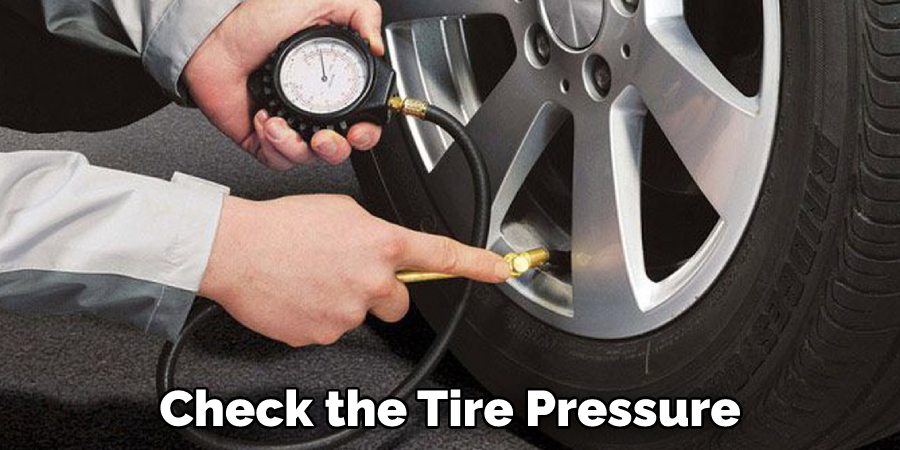
- Look for any other potential causes of a slow leak, such as nails, screws, or other materials embedded in the tire.
- Make sure to use a tire sealant specifically for the tire being repaired.
- Ensure all tools used in the process have been properly cleaned and free from dirt or other debris before use.
- Carefully read and follow the instructions provided with any sealant products for proper application.
Following these steps and taking appropriate safety precautions will help ensure that a slow-leaking tire is properly fixed and safe to drive on. If there are any other signs of severe damage, such as tread separation or bulging sidewalls, a professional should inspect the tire before attempting any repairs.
How Do You Prevent Future Slow Tire Leaks?
- Check the Tire Pressure Regularly: Keeping your tires inflated to their recommended pressure is key to preventing slow tire leaks. You should check your tire pressure every month and before taking long road trips, as well as after any significant changes in weather conditions.
- Inspect Your Tires More Often: Check your tires for signs of wear, including bulges and bald spots. If you see any of these warning signs, replace the tires as soon as possible.
- Look for Visible Damage to Tires: Check your tires for any visible damage that could be causing the slow leaks, such as punctures or cuts in the treads.
- Get Regular Tire Service: Taking your car in for regular tire service is one way to ensure that any potential slow leaks are caught before they become a bigger problem.
- Keep an Eye Out for Changes in Your Vehicle’s Ride Quality: If you notice that your ride quality has changed, it could indicate a slow leak or another issue with your tires. Pay close attention and take your car in for service as soon as possible.

By following these steps, you can help prevent slow tire leaks before they become a bigger problem. Keeping your tires properly inflated and looking out for any visible damage to the treads will go a long way toward extending the life of your tires.
How Much Does It Cost to Fix a Slow Tire Leak?
A slow tire leak can be a frustrating and potentially dangerous issue. Fortunately, however, fixing the issue does not have to be expensive. How much you will spend on repairs depends largely on what is causing the leak and how accessible it is for repair. If a nail or other sharp object has created a hole in your tire, you may require a tire patch to repair the damage. Patching a tire can typically be completed for between $20 and $40, depending on where you take your car.
If the tire leak is caused by an issue such as dry rot or a worn-out valve stem, then more extensive repairs will likely be necessary. In this instance, you may need to replace the tire. Depending on the type of tire and size you require, this could cost anywhere from $50-$200 or more.
How Can You Tell if Faulty Valve Stem causes a Slow Tire Leak?
If you have a slow tire leak, it may be caused by a faulty valve stem. You may notice that the tire is going flat faster than usual or that it needs to be refilled more often. You can check for a faulty valve stem in several ways. First, look for bubbles coming from the valve stem itself. If you see any, it could indicate an air leak. You can also inspect the stem for cracks, which may indicate that it is damaged and needs to be replaced.
Additionally, you can use a tire pressure gauge to check the tire’s pressure before and after filling it with air. If there is a large difference between the two readings, it may indicate that the valve stem is faulty. If you suspect a faulty valve stem, replacing it with a new one is best. It is important to use a high-quality valve stem designed for your specific type of tire to avoid any future issues.
In addition, make sure that the tire has been securely seated on the rim before filling it with air. By following these steps and being aware of any signs that indicate a faulty valve stem, you can easily fix slow tire leaks caused by this issue. With careful inspection and maintenance, your tires should remain in good condition for many years to come.
Are There Any Warning Signs That Indicate a Potential Slow Tire Leak?
Yes, there are warning signs that indicate you might have a slow tire leak. Look for visual cues such as bulging or blisters in the tire’s sidewall, a feeling of instability while driving on uneven surfaces, and an abnormally low tire pressure reading from your car’s dashboard monitor. If you notice any of these signs, it is important to inspect the tire for damage and check for a leak.

Conclusion
One of the main disadvantages of fixing a slow tire leak is that it can take some time and effort to do. Depending on the severity of the leak, you may have to replace the entire tire to repair the issue. Additionally, if you don’t know what caused the leak in the first place, you may not be able to permanently fix the problem, which means you’ll have to keep an eye on it and be prepared to patch it up or replace the tire in the future.
If a tire is severely damaged, it may not hold the same pressure as before, meaning you’ll need to check the pressure more often and adjust accordingly. In conclusion, a slow tire leak can be fixed in a few simple steps. By inspecting the tire for any signs of damage, using a tire pressure gauge to verify the air pressure, and checking for punctures or other issues, you can quickly identify the source of the problem.
If the cause is determined to be an inner tube puncture, then patching it is the most cost-effective remedy. If the cause is determined to be an air leak due to a faulty valve stem, then replacing the stem should be done as soon as possible. I hope this article has been beneficial in learning how to fix slow tire leak. Make Sure the precautionary measures are followed chronologically.

